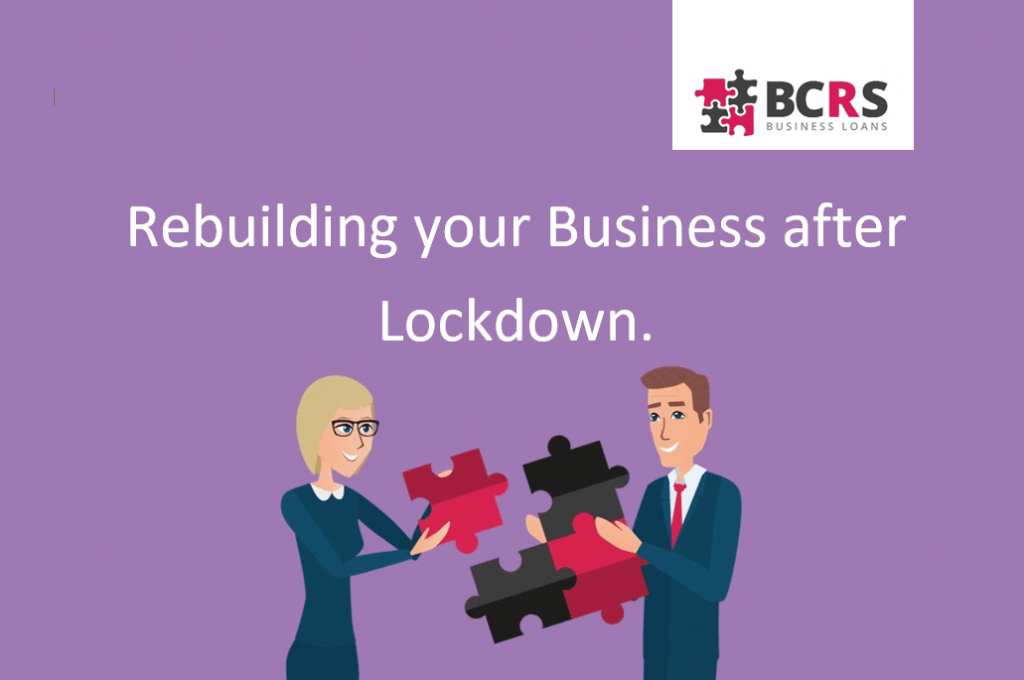The COVID-19 outbreak has wreaked financial havoc across the UK, leaving many SME owners struggling in its wake. According to the Office for National Statistics, 95% of businesses have now re-opened under the government guidance and social distancing measures. Having a strategy in place for rebuilding your business after lockdown can help you prepare to hit the ground running. If you’re not sure where to start, the points below can help you get your business back on track.
Assess the Financial Damage
The first step in developing a rebuilding plan for COVID-19 is determining how much of an effect it has already had on your business.
If you haven’t updated your financial statements such as profit and loss or cash flow statements recently, it’s helpful to do so sooner rather than later. You can then compare them to last year’s numbers to see exactly how much your business has been affected. Click here to see some top tips for a cash flow forecast from our Head of Credit, Tony Wood.
Don’t forget to consider other ways in which your business has been affected. For example, if employees have been furloughed or redundancies are likely and if you’ve cut your advertising and marketing budget down, these will need to be factored into your rebuilding plan.
Take a Second Look at Your Business Plan
Your business model may have worked perfectly fine pre-COVID-19, however post-COVID-19 may mean you have to do some fine-tuning.
Specifically, you may need to consider how your business can pivot to adjust to a new normal. For example, if you previously relied on foot traffic to a brick-and-mortar location for sales, you may need to look at a digital expansion to accommodate the higher numbers of people who are shopping from home.
When going over your business plan and business model, be clear on your business’s strengths and weaknesses. Then, look at what was performing well before that may not work as well now and vice versa to see where you can adjust or improve to remain competitive. Also don’t forget to revisit your business goals to make sure they’re realistic, given the current circumstances. For example, you may have set a target revenue goal for the year that will need to be scaled back now to account for the affects of the crisis.
Consider Whether You’ll Need Funding to Recover
Over the last few months, the Government have introduced a range of support mechanisms to enable businesses to continue. There is a need for businesses to access a substantial and fast injection of cash to support cashflow and safeguard jobs during these unprecedented times.
Coronavirus Business interruption Loan Scheme (CBILS)
The Coronavirus Business Interruption Loan Scheme (CBILS) was announced in March 2020 and can provide facilities for smaller businesses (SMEs) across the UK who are experiencing lost or deferred revenues, leading to disruptions to their cashflow with loans available between £50,001 – £5m to support the continued provision of finance to UK SMEs during the Covid-19 outbreak.
Bounce Back Loan Scheme (BBLS)
The BBLS was announced on 27th April 2020 and is a scheme aimed at micro businesses which are experiencing lost or deferred revenues as a result of the COVID-19 outbreak. It is designed to provide debt finance of between £2,000 and £50,000.
BCRS are an accredited lender for the CBILS scheme, providing funding to SMEs in and around the West Midlands from £50,001 -£150,000 with terms from 1-6 years. Please click here to find out more about our offering and eligibility criteria.
For more information regarding CBILS with other accredited lenders click here.
Develop a Timeline for Rebuilding
You may have several things you need or want to do to recover following COVID-19 however, remember that doing everything at once may not be realistic. Having a timeline to follow will help to prioritise your most important actions first.
For example, your immediate goal may be securing funding for your business. Once you’ve done that, you can set a timeline for bringing back more employees, restocking inventory and, reopening your doors if you haven’t done so already.
It is also important to track your progress. Especially if you’ve secured capital to fund your business, because you don’t want to waste time on activities that aren’t delivering a solid return on your investment. In the initial stages of your business recovery, you may want to check in weekly to see what’s working and what’s not. Later, you can consider reviewing your business financials less often as things begin to stabilise.
Create a Contingency Plan for the Next Crisis
While the coronavirus pandemic may seem like a once-in-a-lifetime event, the reality is that an emergency can come along to disrupt your business at any time. Use what you’ve learned during the current pandemic to prepare for the next crisis to help you prepare your business for future crises.
Click here to read more from the BCRS blog page.
Follow us on social media
![]() Published by – Lauren McGowan – Digital Marketing Assistant
Published by – Lauren McGowan – Digital Marketing Assistant




